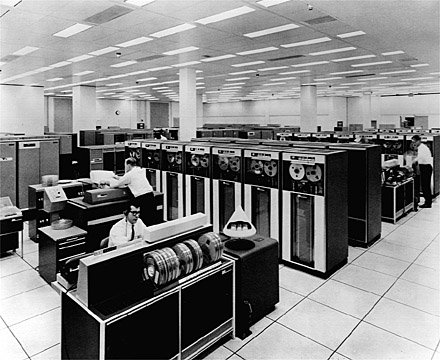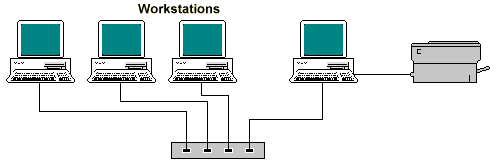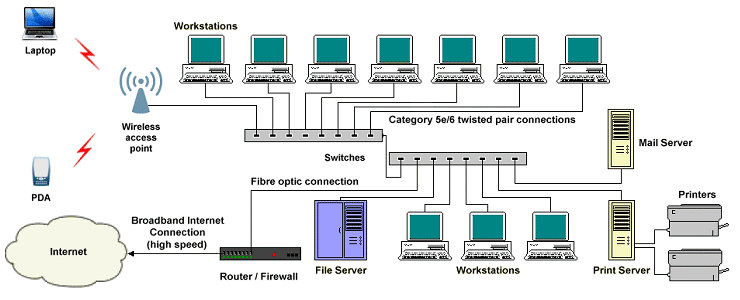| Author: | |
| Website: | |
| Page title: | |
| URL: | |
| Published: | |
| Last revised: | |
| Accessed: |
The type of network most widely implemented to day is based on the principle of having one or more file servers at the heart of the network. This kind of network is often referred to as a server-based or client-server network. There are however other models for implementing networks. The three principal ways of connecting computers together to share or use network resources are:
Perhaps the oldest model of networking is based on the idea of having one very large and powerful central computer, to which a number of computer terminals are directly connected. In the early days of computing, this central computer would invariably have been a mainframe computer (often called the host computer). This arrangement allowed many users to access the resources of the "host" mainframe computer simultaneously. All processing is carried out on the mainframe, and each terminal device consisted of a keyboard and a display screen, allowing the user to input data via the keyboard and view the resulting output on the screen. In order for the arrangement to work, a number of special multi-user, multi-tasking operating systems were developed. The most enduring of these was the UNIX operating system, which is still in widespread use today. The very high cost of implementing and maintaining a mainframe computer system meant that only the largest organisations could afford to install and run them. Smaller organisations wishing to make use of such computing facilities could buy or lease access to computing facilities from larger organisations with mainframe capacity to spare.

Mainframe computers provided centralised computing resources
In a peer-to-peer network, all computers have equal status (i.e. they are peers). There is no centralised network management, and any computer can provide resources to any of the others. Typically, the workstations on such a network are PCs, and each computer is capable of functioning in stand-alone mode when disconnected from the rest of the network. Peer-to-peer networks are suitable for a small number of computers (typically ten or less) in the same physical location, such as a small office. They are easy to set up and administer, and are relatively inexpensive. Individual users are responsible for determining which resources on their computer will be shared with other users. The main requirement for setting up a peer-to-peer network is that each computer must be equipped with a network interface card, and have an operating system (e.g. Microsoft Windows or Linux) that will support basic networking. Computers are typically connected via a small hub or switch using category 5 or category 6 twisted pair network cables.

A simple peer-to-peer network
Client-server networks can support a large number of clients (workstations) and link multiple computing hardware and software platforms. They rely on one or more specialised computers called servers, and are centrally administered. Processing is distributed in the sense that application software can be installed on both server and client machines. Workstations are often personal computers, suitable equipped, that can operate as stand-alone machines when the network is unavailable.
Client-server networks are highly scaleable. As the number of users increases, additional servers can be added to cope with the additional workload. Network servers are usually either minicomputers or (more commonly) high-specification personal computers, with fast (oftem multi-core) processors and large amounts of working memory and secondary storage. A specialised network operating system (NOS) must be installed on the network?s file servers to provide the required network functionality. Current examples of proprietary network operating systems include Microsoft Windows Server, Novell Netware, Unix and proprietary versions of Linux. Open source solutions include Linux and open source versions of Unix.

A typical client-server network
A server is a computer connected to a network that provides both local and remote client computers with access to network resources. There are many different kinds of server. A file server, for example, provides access to shared data storage areas on the network, and may also provide network authentication services. A print server provides access to network printing services, a mail server provides storage and forwarding services for incoming and outgoing electronic mail messages, and an application server provides access to networked application software. A number of different network services can be provided by the same physical server, as long as the necessary software is installed on the server. Usually, however, each type of service is provided by a different physical server in order to evenly distribute the workload, and in some cases several servers may act as alternative providers of the same service (network logon authentication services, for example), if demand for that service is likely to be high at a certain time of day.